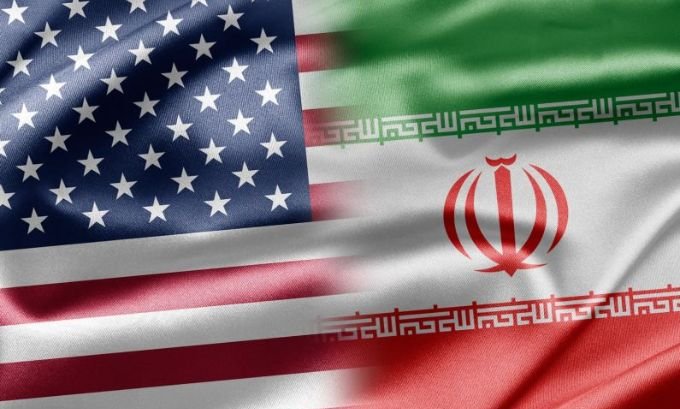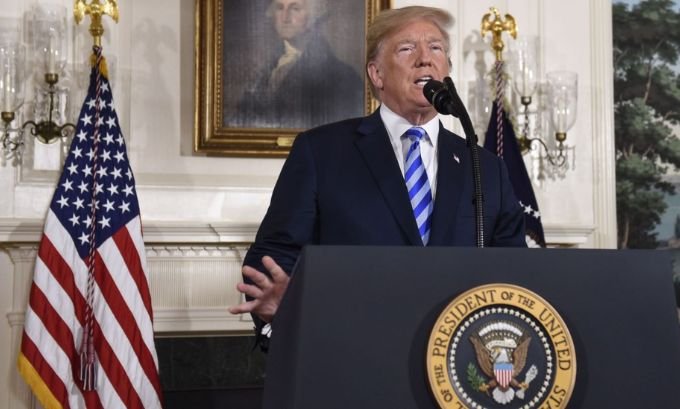In May 2018, the United States made a pivotal decision to unilaterally withdraw from the Iran nuclear deal, formally known as the Joint Comprehensive Plan of Action (JCPOA). This landmark agreement, signed in 2015 by Iran, the U.S., China, France, Russia, the United Kingdom, and Germany, was designed to prevent Iran from developing nuclear weapons in exchange for lifting economic sanctions.
The U.S. withdrawal and the subsequent re-imposition of sanctions marked a significant shift in foreign policy, aiming to pressure Iran into negotiating a more comprehensive deal. This move triggered a cascade of consequences, reshaping international relations, destabilizing the Middle East, and reviving the very nuclear proliferation risks the deal was meant to contain. This article will explore the multifaceted impact of the U.S. withdrawal from the JCPOA, examining its effects on Iran’s nuclear program, the regional balance of power, and global diplomacy.
A Quick Refresher: What Was the Iran Nuclear Deal?
The JCPOA was the culmination of years of intense diplomatic negotiations. Its primary objective was to place strict, verifiable limits on Iran’s nuclear activities to ensure they remained peaceful. In exchange, crippling international sanctions that had isolated Iran’s economy were lifted.
Key components of the agreement included:
- Uranium Enrichment Limits: Iran agreed to significantly reduce its stockpile of enriched uranium and limit its enrichment level to 3.67%, far below the 90% required for a nuclear weapon.
- Centrifuge Reduction: The number of operational centrifuges—machines used for enriching uranium—was drastically cut.
- Facility Conversion: Key nuclear facilities, such as the Fordow Fuel Enrichment Plant, were repurposed for non-military research.
- Rigorous Inspections: Iran consented to an unprecedented level of international monitoring by the International Atomic Energy Agency (IAEA), allowing inspectors access to its nuclear sites to verify compliance.
Before the U.S. withdrawal, the IAEA repeatedly confirmed that Iran was adhering to its commitments under the JCPOA. The deal was widely seen by its supporters as a diplomatic success, effectively blocking Iran’s pathways to a nuclear bomb without resorting to military conflict.

The Aftermath of the U.S. Withdrawal
The decision to exit the JCPOA was framed by the Trump administration as a necessary step to counter Iran’s broader “malign activities,” including its ballistic missile program and support for proxy groups in the Middle East. The administration initiated a “maximum pressure” campaign, re-imposing harsh economic sanctions to cripple Iran’s economy and force it back to the negotiating table for a “better deal.” The consequences of this policy shift were immediate and far-reaching.
Iran’s Renewed Nuclear Advancements
Freed from its obligations following the U.S. exit and the failure of European signatories to offset the impact of American sanctions, Iran began to systematically scale back its compliance with the JCPOA. This strategic response involved a series of calculated steps to ramp up its nuclear program.
- Increased Enrichment: Iran started enriching uranium to levels well beyond the 3.67% limit. It has since reached enrichment levels of up to 60%, a short technical step away from weapons-grade material.
- Advanced Centrifuges: The country began operating more advanced and efficient centrifuges, accelerating its ability to produce enriched uranium.
- Restricted Inspections: Tehran reduced cooperation with the IAEA, limiting inspectors’ access to certain sites and removing monitoring equipment installed under the deal.
As a result, Iran’s “breakout time”—the time it would need to produce enough fissile material for one nuclear bomb—has shrunk dramatically. While under the JCPOA, the breakout time was estimated to be at least a year, experts now believe it could be as short as a few weeks. Although producing the material is just one step in building a deliverable weapon, this accelerated timeline has significantly heightened proliferation concerns.
Economic Hardship and Political Fallout in Iran
The re-imposition of U.S. sanctions had a devastating effect on the Iranian economy. The sanctions targeted key sectors, including oil, banking, and shipping, cutting Iran off from the global financial system.
- Economic Collapse: Iran’s currency, the rial, plummeted in value, leading to hyperinflation. The cost of everyday goods soared, and millions of Iranians were pushed into poverty.
- Humanitarian Impact: While intended to spare humanitarian goods, the sanctions made it difficult for Iran to import essential medicines and medical equipment, exacerbating public health crises.
- Empowerment of Hardliners: The economic collapse undermined the moderate political faction in Iran that had championed the nuclear deal. The failure of the agreement to deliver promised economic benefits fueled public discontent and empowered hardliners who had always been skeptical of engagement with the West. This shift was cemented with the election of Ebrahim Raisi, a conservative cleric, as president in 2021.
Escalating Tensions in the Middle East
The “maximum pressure” campaign did not lead to a new deal; instead, it fueled a dangerous cycle of escalation across the Middle East. With its economy under siege and diplomatic avenues closed, Iran responded by asserting its influence more aggressively.
- Attacks on Shipping and Infrastructure: The period following the U.S. withdrawal saw a series of attacks on oil tankers in the Persian Gulf and drone strikes on Saudi Arabian oil facilities, which were widely attributed to Iran or its proxies.
- Direct Confrontation: Tensions between the U.S. and Iran reached a boiling point in January 2020 with the U.S. assassination of General Qasem Soleimani, a top Iranian military commander. Iran retaliated with ballistic missile strikes on U.S. bases in Iraq.
- Proxy Conflicts: The rivalry between Iran and its regional adversaries, primarily Saudi Arabia and Israel, intensified. This has played out in proxy battlegrounds across the region, from Yemen to Syria, further destabilizing an already volatile area.

A Divided International Community
The U.S. withdrawal isolated Washington from its key European allies—the UK, France, and Germany—who were co-signatories of the deal. These nations criticized the U.S. decision and attempted to salvage the agreement, but their efforts were largely unsuccessful due to the overwhelming power of U.S. secondary sanctions. This trans-Atlantic rift weakened the collective diplomatic front that had been crucial in negotiating the original deal.
Russia and China, the other signatories, also opposed the U.S. withdrawal. They have since deepened their economic and strategic ties with Iran, undermining the effectiveness of U.S. sanctions and complicating any future diplomatic efforts.
What Comes Next?
Efforts to revive the JCPOA under the Biden administration have so far failed to produce a breakthrough. Negotiations have been stalled by mutual mistrust, with both sides demanding concessions the other is unwilling to make. Iran seeks guarantees that a future U.S. administration will not abandon the deal again, a promise that is difficult for Washington to deliver.
The world is now in a more precarious position than it was before 2018. Iran is closer to nuclear capability, the Middle East is more volatile, and the international community is more divided. The withdrawal from the JCPOA, intended to achieve a more stringent agreement, has instead dismantled a working non-proliferation framework and left a more dangerous and uncertain reality in its wake. The path forward remains unclear, but it underscores a critical lesson in international diplomacy: abandoning multilateral agreements, however imperfect, often carries a higher price than working to enforce and improve them.


